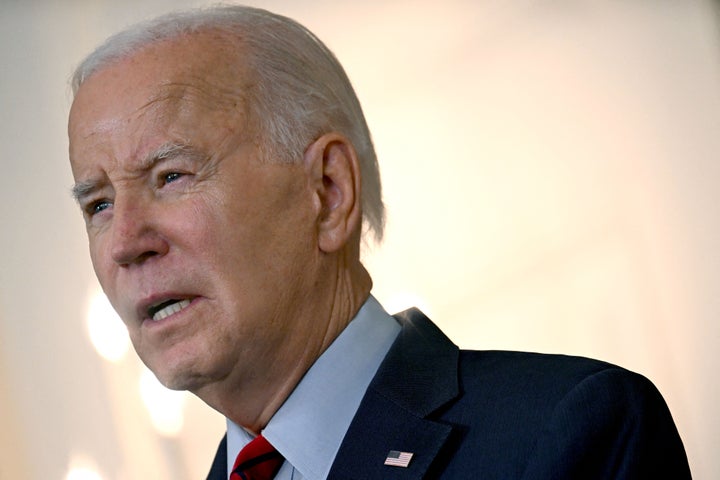
The unofficial end of summer marked the beginning of freak-out season for some Democrats as polls from both The Wall Street Journal and CNN showed President Joe Biden in a tight race with his most likely GOP opponent, former President Donald Trump, more than a year before the election.
The Journal poll has Biden’s approval rating at just 42%, and it shows him earning 46% of the vote to Trump’s 45%. The CNN poll had Biden’s approval at a measly 39%, with the projected presidential race at 45% to 46%. Both polls found a majority of voters believed Biden was too old for the presidency and thought little of how he had handled the economy.
The polls have caused no small amount of consternation among Democrats, a party whose supporters have been in a state of near-perpetual anxiety since Trump’s victory over Hillary Clinton in 2016. Some of that anxiety is warranted, but there are also reasons not to worry too much, at least not yet, about Biden’s poor standing with the public. Living and dying with every poll is no way to survive the campaign season.
Here are six things to know about the polls:
They’re not a conspiracy.
Let’s get this out of the way: Biden’s weak poll numbers aren’t some evil plot by ratings-obsessed CNN or the Rupert Murdoch-owned Wall Street Journal to make it falsely appear as if Biden is tanking. Various liberal and Democratic social media influencers have implied over the past week that these polls are invalid but ended up exposing their own ignorance rather than media wrongdoing.
Yes, a Trump-aligned pollster ― Fabrizio, Lee & Associates ― helps conduct the Wall Street Journal poll. But so does GBAO Strategies, a major Democratic polling firm that has done work for everyone from Sen. John Fetterman (D-Pa.) to EMILY’s List. Pairing up campaign pollsters of opposite parties is a common tactic for media or advocacy organisations looking to get nonpartisan poll results.
Similarly, CNN conducted an “oversample” of Republican voters in its poll in order to get a better picture of the Republican presidential primary, not to somehow stack the deck against Biden. Both media and partisan pollsters regularly oversample specific ethnic, ideological or geographical groups to get more details about how a specific place or bloc of voters is feeling rather than relying on the subsamples collected in the normal course of polling, which can be too small to draw any firm conclusions.
The anti-bedwetting brigade is out in full force, and mostly correct.
There are many, many reasons to downplay the importance of these polls, and various Democratic bigwigs were out in force on Thursday announcing them.
“I don’t worry about any polls a year and a half before the election,” Sen. Chris Murphy (D-Conn.) told HuffPost. While his timeline was not entirely accurate, he’s correct to say the predictive value of polls this far out is essentially nil. Presidents Barack Obama and Bill Clinton both came back for clear victories after trailing the leading GOP contenders at similar points in their presidencies.
And a statement from Kevin Munoz, a spokesperson for Biden’s reelection campaign, covers most of the other reasons Democrats could come up with not to worry: “Coming off the President’s historic midterm performance, President Biden is delivering results, his agenda is popular with the American people, and we are mobilizing our winning coalition of voters well ahead of next year’s general election. Next year’s election will be a stark choice between President Biden and the extreme, unpopular MAGA agenda. We’ll win in 2024 by putting our heads down and doing the work, not by fretting about polls.”
Note how Munoz said the president’s agenda is popular with voters. That’s true, and the Democratic Party’s political apparatus is set to spend around $1 billion reminding the American people of what exactly his agenda is. In other words, the real campaign for the presidency has only barely begun.
The polls point to real and clear weaknesses.
Regardless of the caveats, the surveys also point to a series of very clear weaknesses for the president. The first one, and the one Biden can’t do anything to directly change, is his age. Many Americans think Biden is too old to be president and have real worries about how he would hold up during a second term in the White House.
The second is his handling of the economy. In both polls, his ratings for how he’s handled the economy are worse than his approval ratings overall. Though there had been some upward movement in polling about Biden’s handling of the economy as economic news has improved, including rock-bottom unemployment and decreases in inflation, these two polls show little evidence things had changed.
The third weakness is directly related to the first and is perhaps Biden’s longest-standing weakness, dating back to the 2020 primaries. Young people have never been particularly enthusiastic about the now-octogenarian, even as Biden has moved to the left ideologically and taken major steps on some of their biggest priorities, including forgiving student loan debt and combating climate change.
The final weakness is the most alarming for some Democrats: While Biden is largely holding on to the share of white voters he won in 2020, he’s looking weaker among Black and Latino voters, the former of which are traditionally the base of the Democratic Party. Biden’s problems with Latinos also date back to 2020, and the party has worried about lower turnout among Black voters since Obama left the ballot. (A caveat here: Pre-election polling in the 2022 midterms also showed Republicans making gains with Black voters, a finding that did not hold up to the reality of the election results, even if Black turnout was weak.)
The Biden campaign is mostly already working to address those weaknesses.
Though the full-fledged campaign hasn’t begun, the Biden campaign has begun a $25 million ad buy, airing spots in key swing states. And those ads show they’re aware of Biden’s weaknesses. One ad, set to air during “60 Minutes” this weekend, focuses on Biden’s surprise trip to Kyiv in February. Is the ad about Biden’s support for Ukraine in the face of Russia’s invasion? Yes. But the subtext is clear: Biden is brave enough, robust enough, vital enough and young enough to go to a war zone.
Other ads from the campaign have explicitly targeted Black and Latino voters. One minute-long ad notes he cut Black child poverty in half while a Spanish-language spot notes his work on prescription drug prices and declares: “The ‘who’ Joe Biden is fighting for isn’t the rich and powerful, it’s us.”
A different indicator looks a lot better for Democrats.
Lastly, polling is not the only thing we can use to predict election results. (Remember, though, polls are a snapshot in time. Attempting to predict year’s results off of today’s polls is foolish.) Special election results are traditionally a good indicator of the overall political environment, and comparing them to the previous regularly scheduled election can indicate which ways the political winds are blowing.
And the winds appear to be at Democratic backs: A FiveThirtyEight analysis found Democratic candidates overperforming the historical partisanship of districts where special elections are held by 10 percentage points from the start of this year to the beginning of August. Does this mean we can expect a 10-point win for Biden next year? Probably not, since this type of analysis comes with as many caveats as polling does. Notably, Democrats’ college-educated base is more likely to show up for irregularly scheduled elections, giving them a built-in advantage for special contests.
